If you are seeking new garnishes in the kitchen, you may be wondering what the differences are between garlic chives vs chives. Are they the same thing, or are they different? Are they from different plants, and what do they both taste like? If you are interested in learning more about chives, whether it be onion chives or garlic chives, you’re in the right place.
In this article, we will compare and contrast garlic chives with chives so that you can fully understand the differences between them. We will go over what they look like, what they are commonly used for, and where they grow best in case you want to grow them fresh in your own backyard. Let’s get started and learn all about chives now!
Comparing Garlic Chives vs Chives
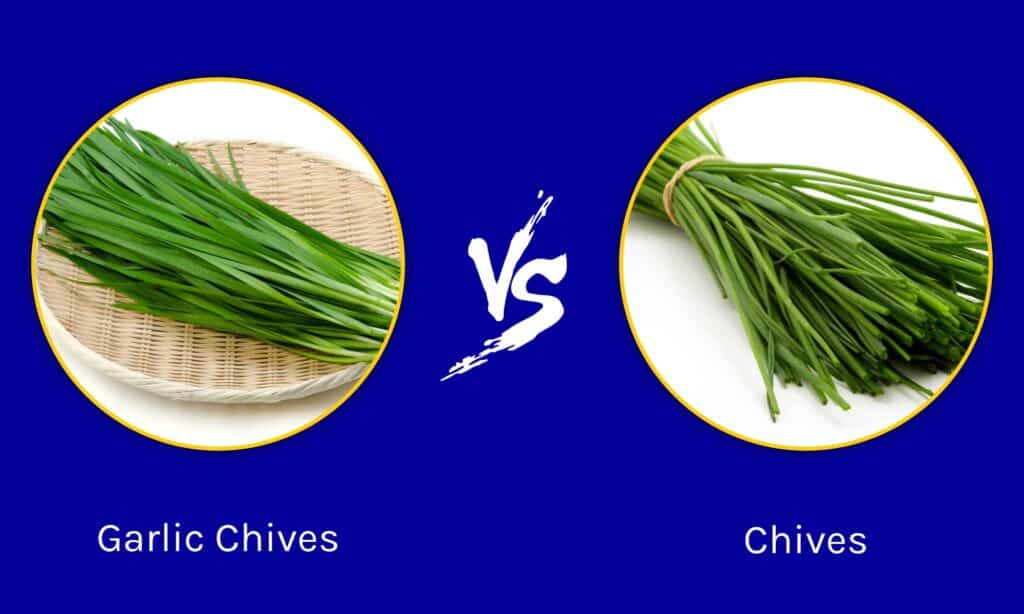
| Chives | Garlic Chives | |
|---|---|---|
| Classification | Allium schoenoprasum | Allium tuberosum |
| Description | Grasslike in appearance, composed of many small shoots or blades of herb from a single, slender bulb. Flowers are purple to white in color, with multiple petals. Shoots are hollow and grow up to 20 inches tall | Grasslike in appearance, with many flat blades of shoots growing from a single bulb underground. Flowers are white in color, with a flatter head than chive flowers. Shoots reach up to 24 inches tall and are a vibrant green |
| Uses | Many culinary uses, including in soups, baking, and dips. Delicate onion flavor makes it more palatable for a variety of dishes, as it will blend better than other options. Best eaten raw or as a garnish | Many culinary uses, though not widely known. Ideal as a garnish or anywhere you need a mild garlic flavor. Holds up well to sauteing or heat, and tastes more flavorful when exposed to cooking elements |
| Hardiness Zones | 3-9 | 4-9 |
| Flavor and Texture | Delicate onion flavor that keeps well when frozen; turns mushy when cooked, so not ideal for stir frys or sautees. Texture is smooth and mild | Mild garlic flavor that tastes even more potent when caramelized or exposed to heat. Remains delicate in texture, though can get mushy if overcooked |
Key Differences Between Garlic Chives vs Chives
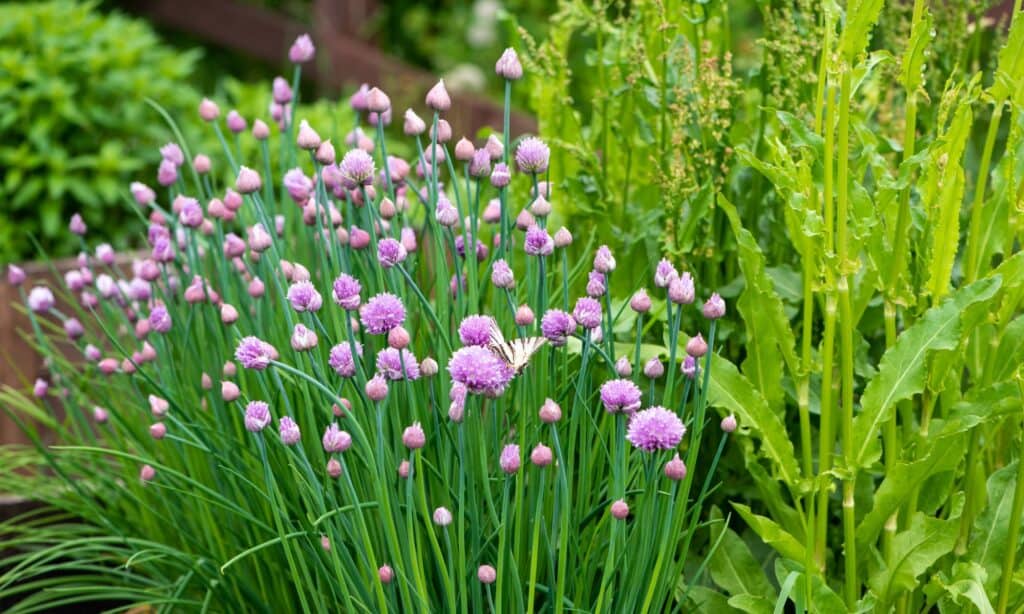
Chives typically grow purple flowers that look like globes, while garlic chives grow white flowers that have a flatter top in comparison.
©iStock.com/Svetlana Monyakova
There are a number of key differences between garlic chives and chives. For example, chives grow shorter overall compared to the average garlic chive plant. In addition, chives grow hollow while garlic chives grow as flat blades. Finally, chives have a mild onion flavor, while garlic chives have a mild garlic flavor, though it is a subtle difference.
Let’s go over all of these differences in more detail now.
Garlic Chives vs Chives: Classification
It may come as no surprise to hear that garlic chives and chives are from the same plant family. They belong to the onion family, commonly known as Allium. However, chives and garlic chives are classified differently and are technically different varieties from one another. For example, garlic chives are classified as Allium tuberosum, while chives are classified as Allium schoenoprasum.
Garlic Chives vs Chives: Description
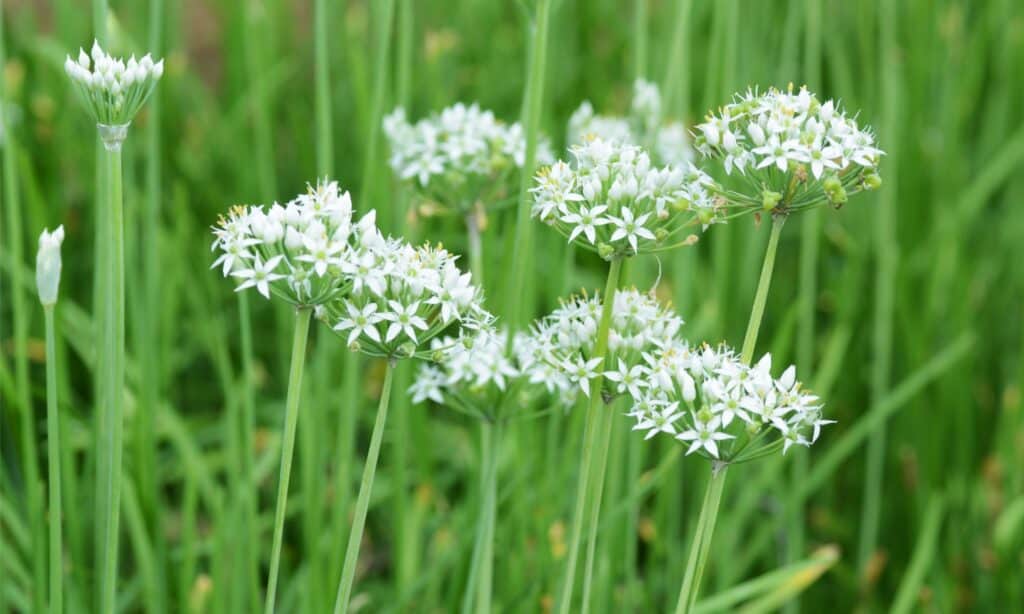
Chives grow in hollow, grass-like stems, while garlic chives grow flat and are not hollow.
©iStock.com/undefined undefined
It may take some time, but there are some ways that you can tell the difference between garlic chives and chives just by looking at them. For example, chives grow in hollow, grass-like stems, while garlic chives grow flat and are not hollow. In addition, garlic chives grow taller than chives overall, typically by 5 to 10 inches.
If you happen to grow garlic chives or chives in your own backyard, there are some differences in the way that their flowers look. For example, chives typically grow purple flowers that look like globes, while garlic chives grow white flowers that have a flatter top in comparison. For the most part, garlic chives are easy to pick out due to the fact that they look like flat blades of grass, while regular chives do not.
Garlic Chives vs Chives: Uses
Both chives and garlic chives have a variety of culinary uses, depending on what you are making. However, chives are more popular in cuisines compared to garlic chives overall. They can be used interchangeably, but garlic chives taste more like garlic compared to the mild onion flavor of regular chives. In addition, garlic chives hold up to heat and sauteing better than regular chives do, so this is something to keep in mind if you want to cook with either variety.
Garlic Chives vs Chives: Hardiness Zones
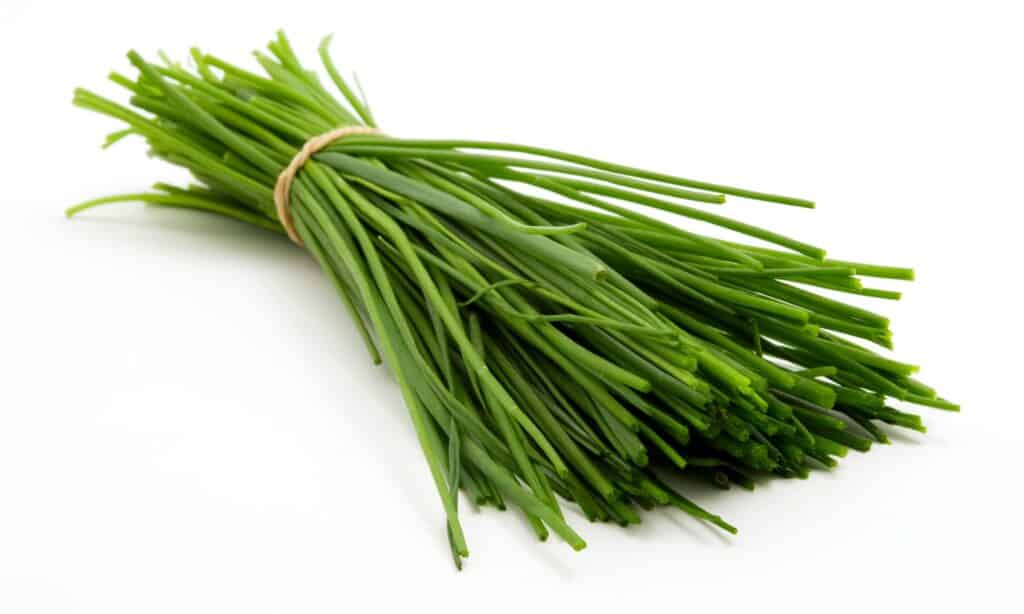
Garlic chives thrive in hardiness zones 4 through 9, while regular chives grow best in hardiness zones 3 through 9.
©iStock.com/only_fabrizio
Despite their similarities in flavor, appearance, and scientific classification, garlic chives and chives have slightly different growing zones that they prefer. For example, chives are more cold-hardy compared to garlic chives overall, which means they grow in more locations.
Garlic chives thrive in hardiness zones 4 through 9, while regular chives grow best in hardiness zones 3 through 9. This is a subtle difference, but something to keep in mind if you live in a colder zone than the average person. You can still grow both options, but garlic chives will have a shorter growing season overall!
Garlic Chives vs Chives: Flavor and Texture
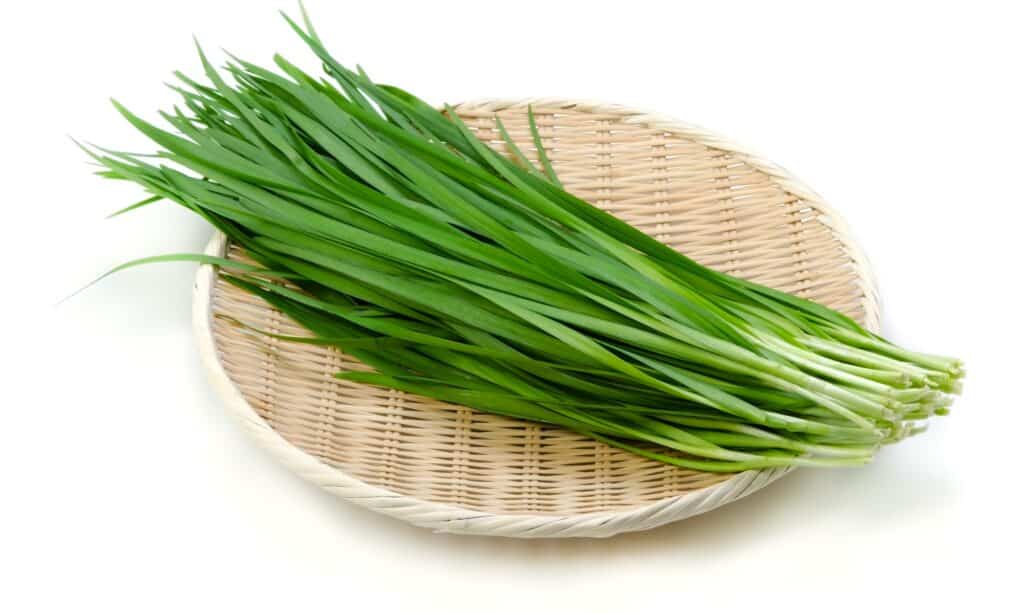
Garlic chives have a subtle garlic flavor to them, while chives taste like onions.
©iStock.com/eye-blink
A final difference between garlic chives and regular chives lies in their flavor and texture. For example, garlic chives have a subtle garlic flavor to them, while chives taste like onions. Both of these plants are not as potent in their flavor compared to traditional garlic and onions, but these herbs make fantastic garnishes and add a level of well-balanced flavor to any meal.
Something important to note about both of these plants is the fact that garlic chives tend to hold up better to heat compared to regular chives. In addition, regular chives get woody or tough as they age, while garlic chives remain tender for the majority of their life.
The photo featured at the top of this post is © iStock.com/undefined undefined
Thank you for reading! Have some feedback for us? Contact the AZ Animals editorial team.






